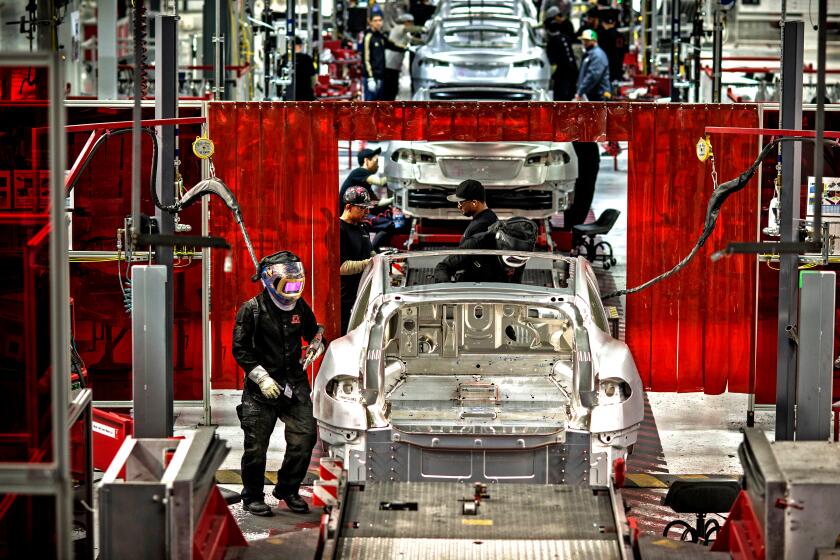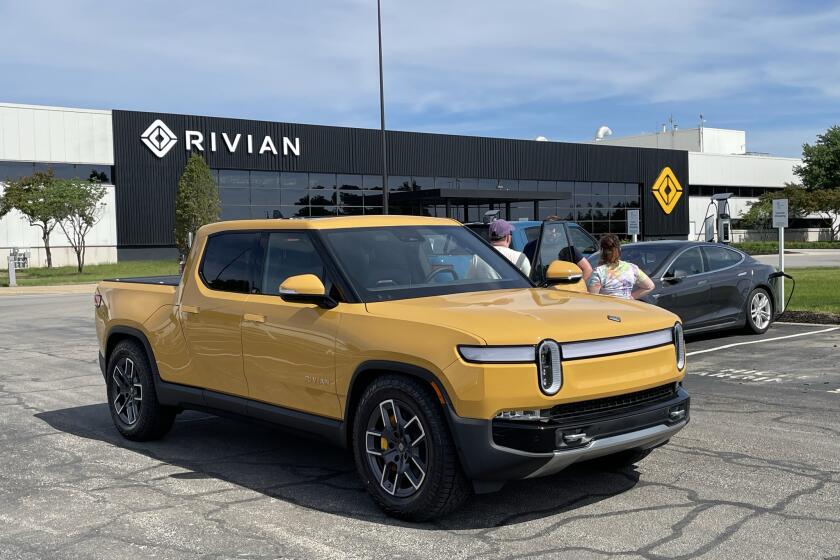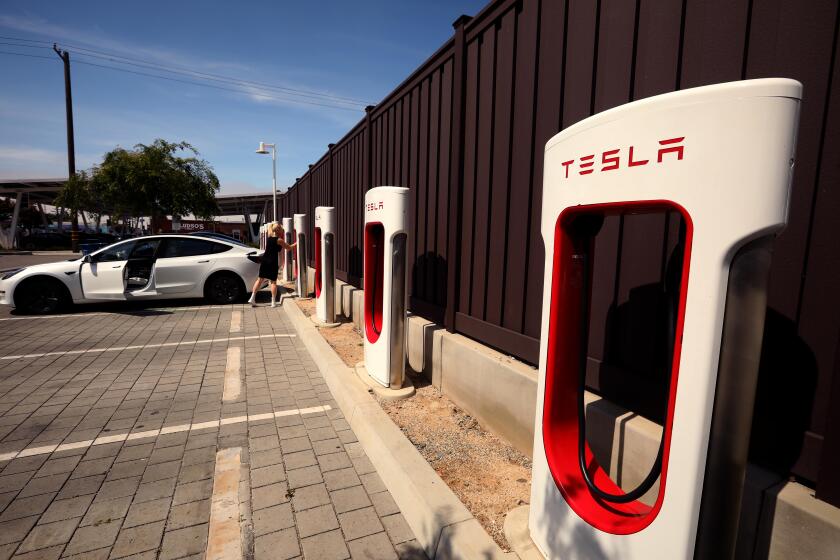U.S. Autos Dominate Polluter List
Detroit has only two vehicles on the American Council for an Energy-Efficient Economy’s annual list of the dozen most environmentally friendly--or “greenest”--cars for 2002, but the domestic auto industry holds the lead when it comes to the other end of the list.
Saturn’s SL sedan was 12th on the greenest list (Highway 1, Feb. 6); the Chevrolet Prizm, actually a Toyota Corolla with a Chevy badge, finished in 11th place.
But nine of the ACEEE’s 12 “meanest” vehicles--those with the worst combined scores for tailpipe emissions, greenhouse gases, fuel efficiency and the like--are from Ford Motor Co., General Motors Corp. and Chrysler Group.
The others are from Italy, Germany and Japan: Lamborghini’s latest 12-cylinder exotic was sixth worst; a new Mercedes-Benz SUV derived from a military truck placed eighth; and Toyota’s Land Cruiser SUV and its Lexus sibling finished ninth in the rankings of least friendly to the environment.
Because fuel consumption affects both tailpipe output and greenhouse gas production, trucks, SUVs and gas-gulping performance vehicles typically do poorly.
And this year the authors of the ACEEE Green Book, which rates every passenger car and light truck sold in the U.S., found little to differentiate among the meanest.
The guide uses a scale of 100 points that no vehicle has come close to achieving. The greenest vehicle this year, Honda’s Insight hybrid, scored 59 points, and the 12th best, the Saturn SL, scored 38.
But among the meanest, only two points separated No. 1 from No. 12. The best of the worst--the four-wheel-drive Lincoln Navigator with 5.4-liter V-8, with a mere 12 points--was almost as bad as the worst of the worst--the four-wheel-drive Dodge Ram 2500 with a 5.9-liter V-8 and just 10 points.
Peaceful Coexistence?
The federal government’s new Freedom CAR project to promote development of fuel-cell-powered vehicles and a national hydrogen fuel infrastructure isn’t likely to interfere with the work of the California Fuel Cell Partnership, a spokesman for the group says.
The partnership is a public-private consortium, based in West Sacramento, where several major auto makers have been testing early versions of their fuel-cell vehicles for as long as a year now.
Freedom CAR (the acronym stands for “cooperative automotive research”) involves only the federal government and the three traditional domestic car makers; the California partnership includes several major import auto companies as well as fuel companies, fuel-cell makers and state and federal agencies.
There has been some concern about General Motors Corp.’s participation in the partnership--the company is suing to block implementation of the state’s Zero-Emission Vehicle mandate and has not yet moved into its office and garage space at the partnership facility.
“We’re still keeping a light on for them,” partnership spokesman Joe Irvin said of GM. “We hope to see them here with a car to test by summer.”
Irvin calls the Freedom CAR project “a helpful step” that will augment and ultimately push beyond the partnership’s work. “The technologies are almost ready. What is lacking and has to be developed is a way to provide the fuel.”
In announcing Freedom CAR last month, federal Energy Department officials said the program, with a $127-million budget for this year, will replace the 8-year-old Partnership for a New Generation of Vehicles, which pushed development of an internal-combustion-engine passenger car with 80-miles-per-gallon fuel efficiency.
Fuel cells, the system preferred not only by environmentalists but also by most auto companies these days, use hydrogen to create electricity on board the vehicle in an electrochemical reaction. The electricity powers a clean electric motor, and the only tailpipe emission from converting hydrogen and oxygen to electricity is steam.
The federal government’s decision to work with the domestic car makers on development of hydrogen fueling technologies will be “a major step forward in bringing fuel cells to the market,” said Don Huberts, chief executive of Shell Hydrogen and 2002 chairman of the California partnership.
(BEGIN TEXT OF INFOBOX)
‘Mean’ Machines
Just as small cars and hybrid gasoline-electric power plants dominated the recently released Green Book list of passenger vehicles most friendly to the environment, trucks--and that means Detroit--dominate the annual guide’s list of “meanest” vehicles.
In the order the Green Book lists them, the environmentally least friendly (all with automatic transmission and four-wheel or all-wheel drive unless noted) among all 2002 models:
Miles/gal.
Make and Model Engine city/highway Pts.
Dodge Ram 2500 Pickup 5.9-liter V-8 11 15 10
Chev. Suburban K2500 6.0-liter V-8 11 15 10
GMC Yukon XL 6.0-liter V-8 12 15 10
Cadillac Escalade/
GMC Denali 6.0-liter V-8 12 15 10
Ford Excursion 5.4-liter V-8 11 15 10
Lamborghini Murcielago* 6.2-liter V-12 9 13 10
GMC Sierra K2500/
Chev. Silverado K2500 6.0-liter V-8 12 15 10
Mercedes-Benz G500 5.0-liter V-8 12 14 11
Toyota Land Cruiser/
Lexus LX 470 4.7-liter V-8 13 16 11
Dodge Ram Wagon** 5.9-liter V-8 12 17 11
Chevrolet Avalanche 5.3-liter V-8 13 17 12
Lincoln Navigator 5.4-liter V-8 12 16 12
* Manual transmission ** Two-wheel drive
Source: ACEEE Green Book



